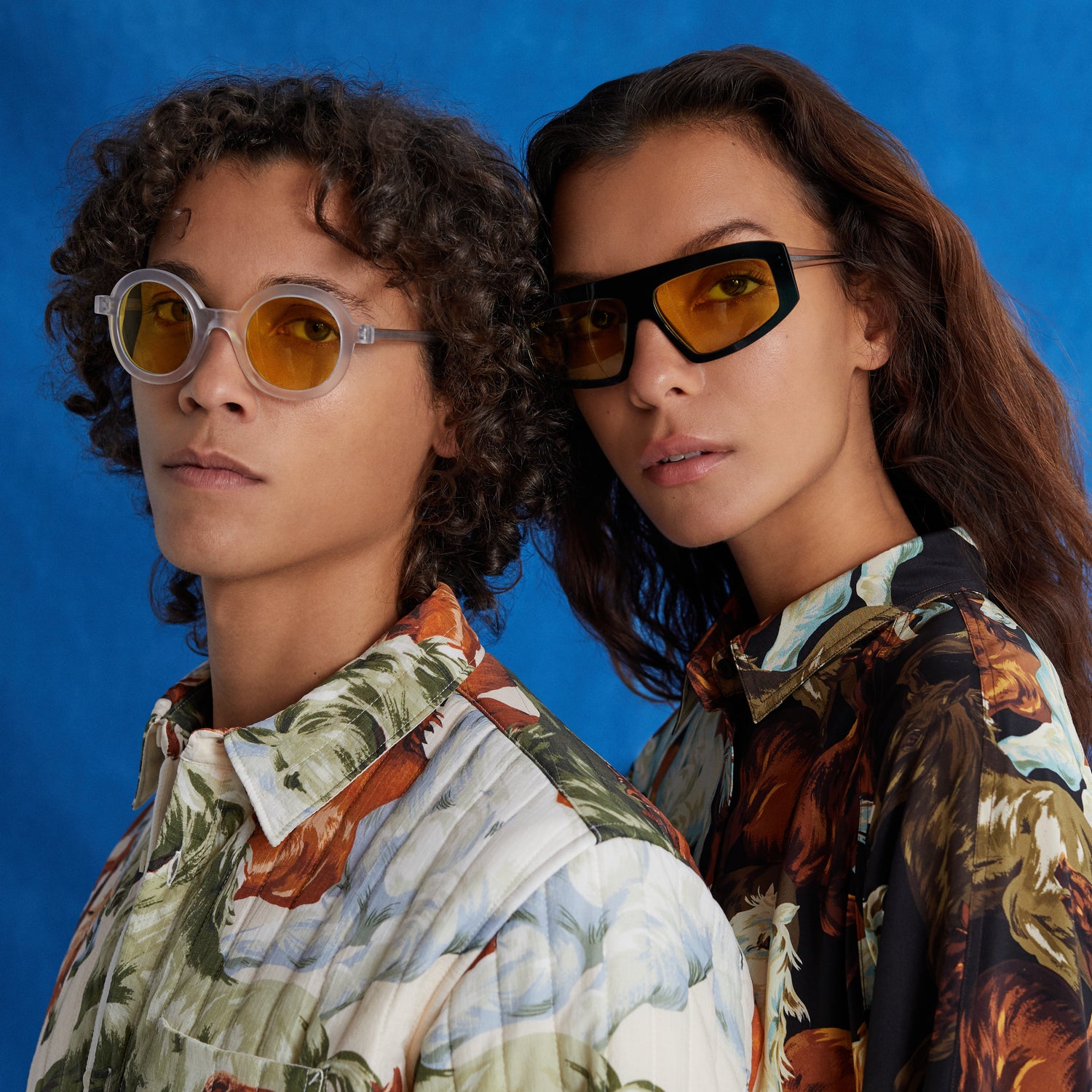With so many shades available, which ones to choose? How do we know which tint of sunglasses best suits our lifestyle? From biking to skiing to fishing, our vision and comfort needs differ, and it's not always easy to make the right choice. In this blog, I answer these questions by showing you the benefits of each color for your favorite outdoor activities.
First, dark colors (brown / gray / green) are ideal for everyday use in the sun, for driving, leisure and sports. Darker shades cut glare and reduce eye strain in bright conditions. Gray and green glasses do not distort the colors, while brown glasses cause a change in the decor, which is often appreciated because it makes it warmer looking.
Second, medium tinted colors (yellow / amber / pink / blue) excel in moderate to low light conditions. They are perfect for skiing, snowboarding and other sports on a cloudy day. These tints provide excellent depth perception, improve contrast in low light and shadow conditions, improve visibility of objects and gives your surroundings a vivid color.
Finally, polarized lenses dramatically reduce the glare caused by light reflecting off surfaces. Polarization is a great feature if you enjoy watersports or are particularly sensitive to glare. However, in some cases, polarized lenses react with distorted surfaces and car windows, creating irregular spots and reducing the visibility of LCD displays. If you use a cell phone or your vehicle's navigation screen frequently, consider mirrored or darker lenses as an anti-glare alternative.
Lens tints: features and advantages
GRAY
Most effective shade for bright conditions.
Minimal color distortion.
Reduces brightness and protects against glare.
Ideal for driving and outdoor sports like golf, running, jogging and cycling.
BROWN
Darkened vision effect but less dark than gray.
Good for blocking blue light in cloudy weather.
Improves the perception of contrasts and depth.
Ideal for tennis, golf, skiing or other sports.
Ideal for low-light situations.
G15 (gray-green)
Combination of gray and green.
Improvement of details, the retina being more sensitive in green environment.
Dramatically reduces glare and eye strain in direct sunlight.
G-15 is the RayBan shade inspired and developed for military pilots.
BLUE
Reduces glare from visible white light (reflected light from haze, fog, snow and water).
USPTA approved for tennis professionals.
PINK
Helps block blue light, improving contrast.
Reputed to be soothing to the eyes and more comfortable than others for longer wear times.
Favorite among computer users because they reduce glare and eye strain.
AMBER (orange-yellow)
Blocks blue light present in cloudy weather.
Improves contrast and depth perception.
Ideal for tennis, golf, skiing or other sports requiring acute visual perception and differentiation of contrasts.
YELLOW
Increase contrast in foggy or low light conditions.
Make objects sharper indoors and outdoors.
May also cause color distortion.
Ideal for snow activities and indoor ball sports.
Also, did you know that most prescription tint-free lenses already provide 92% UV protection, making any additional UV treatment obsolete? The tint of your glasses is therefore chosen primarily for your visual comfort. So if you opt for photochromic technology, the color of which varies according to the brightness, and know that your eyes are still well protected.
For any questions relating to the choice of the best shade to enhance your favorite activity, or for your general use, I invite you to make an appointment with our team of opticians who will be happy to serve you!
Marie Sophie Dion
Optician and owner
glasses bar

